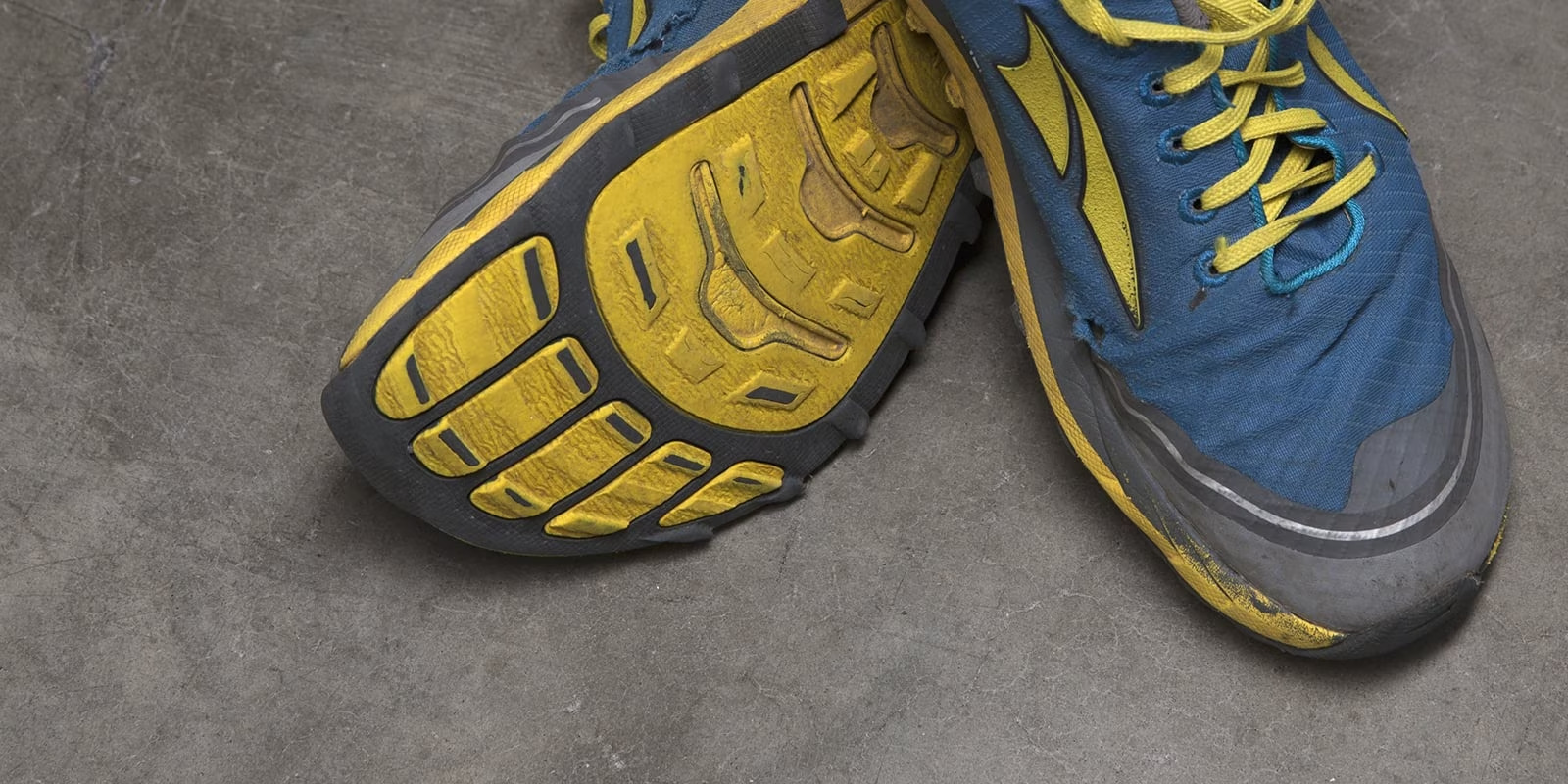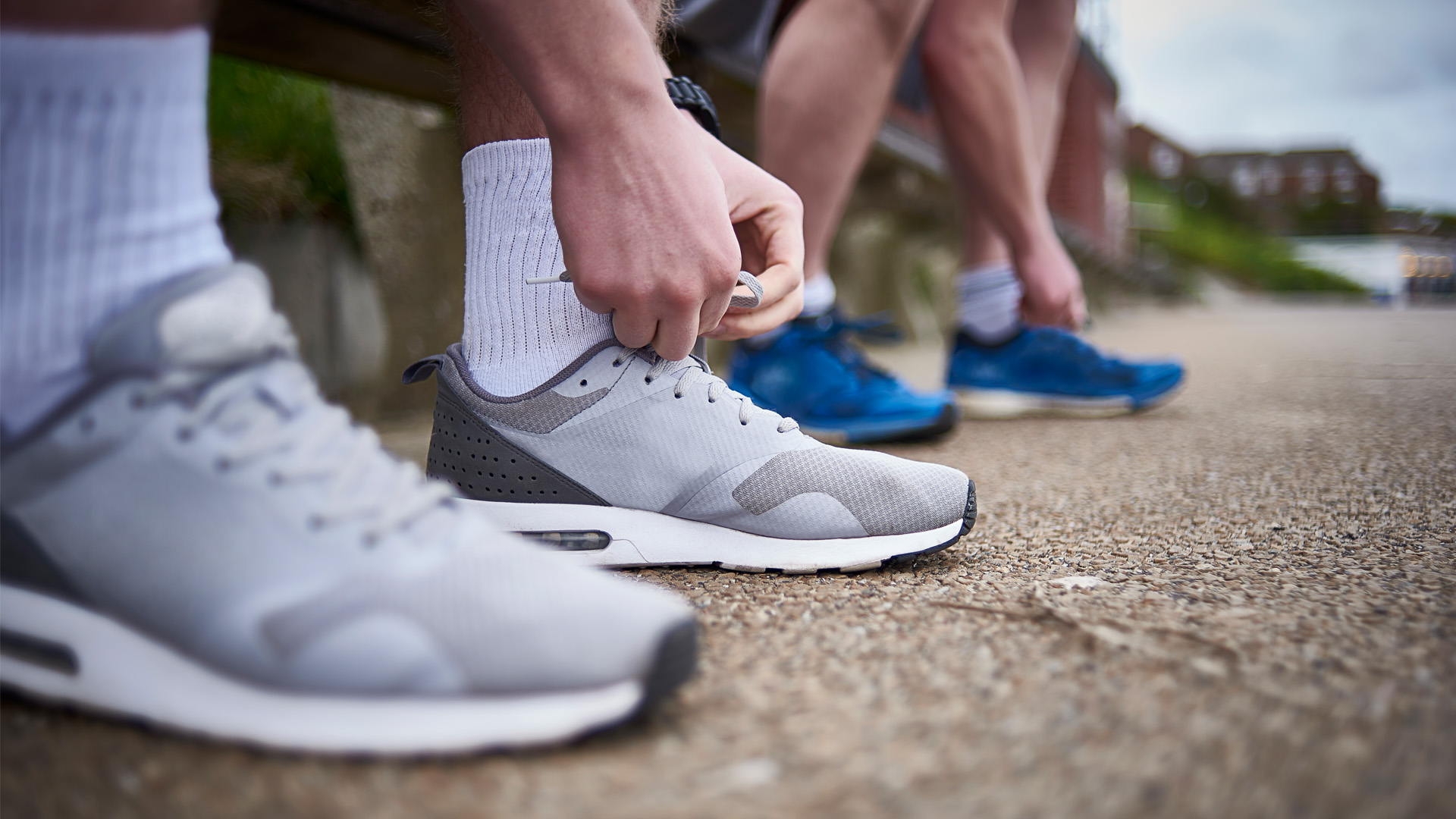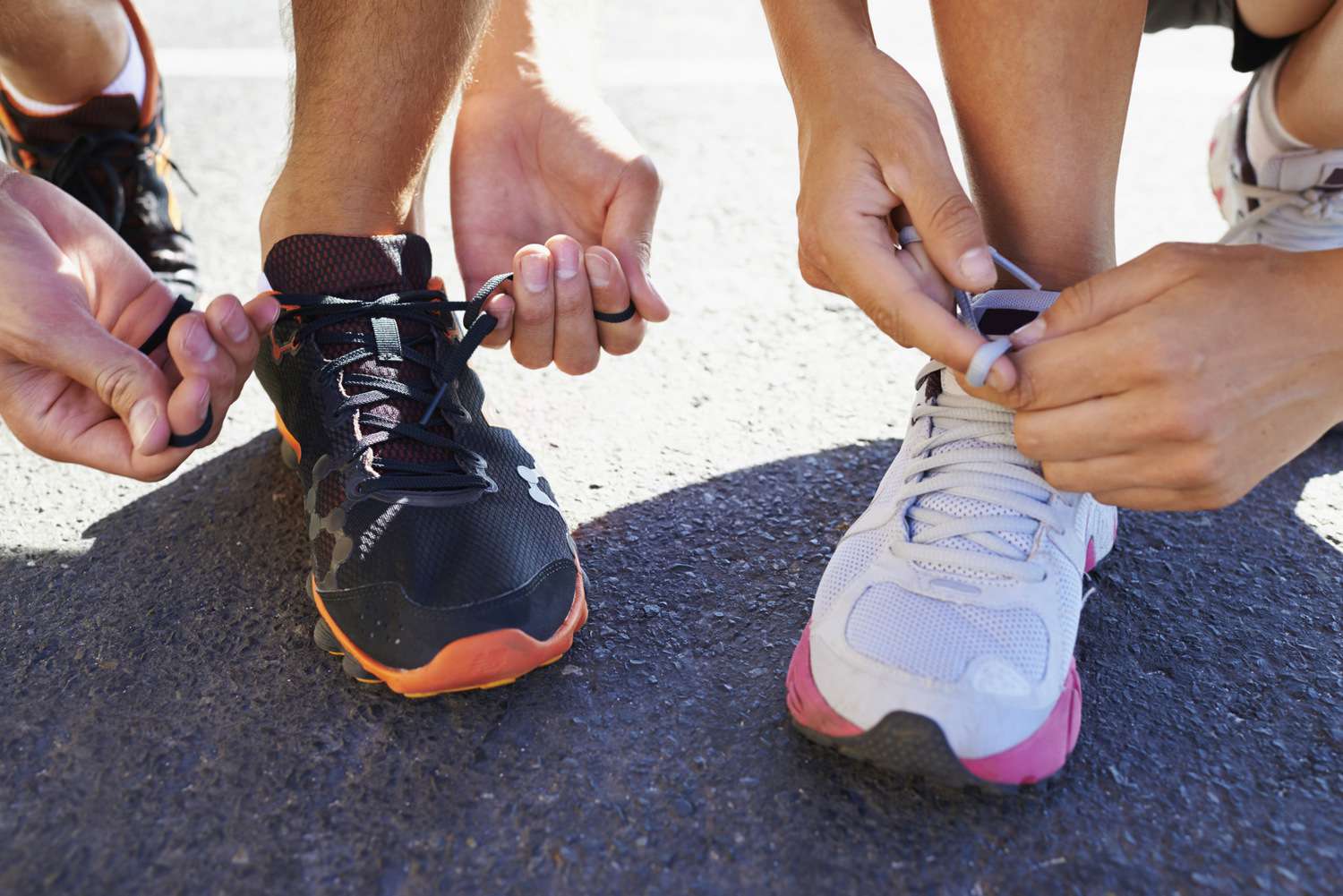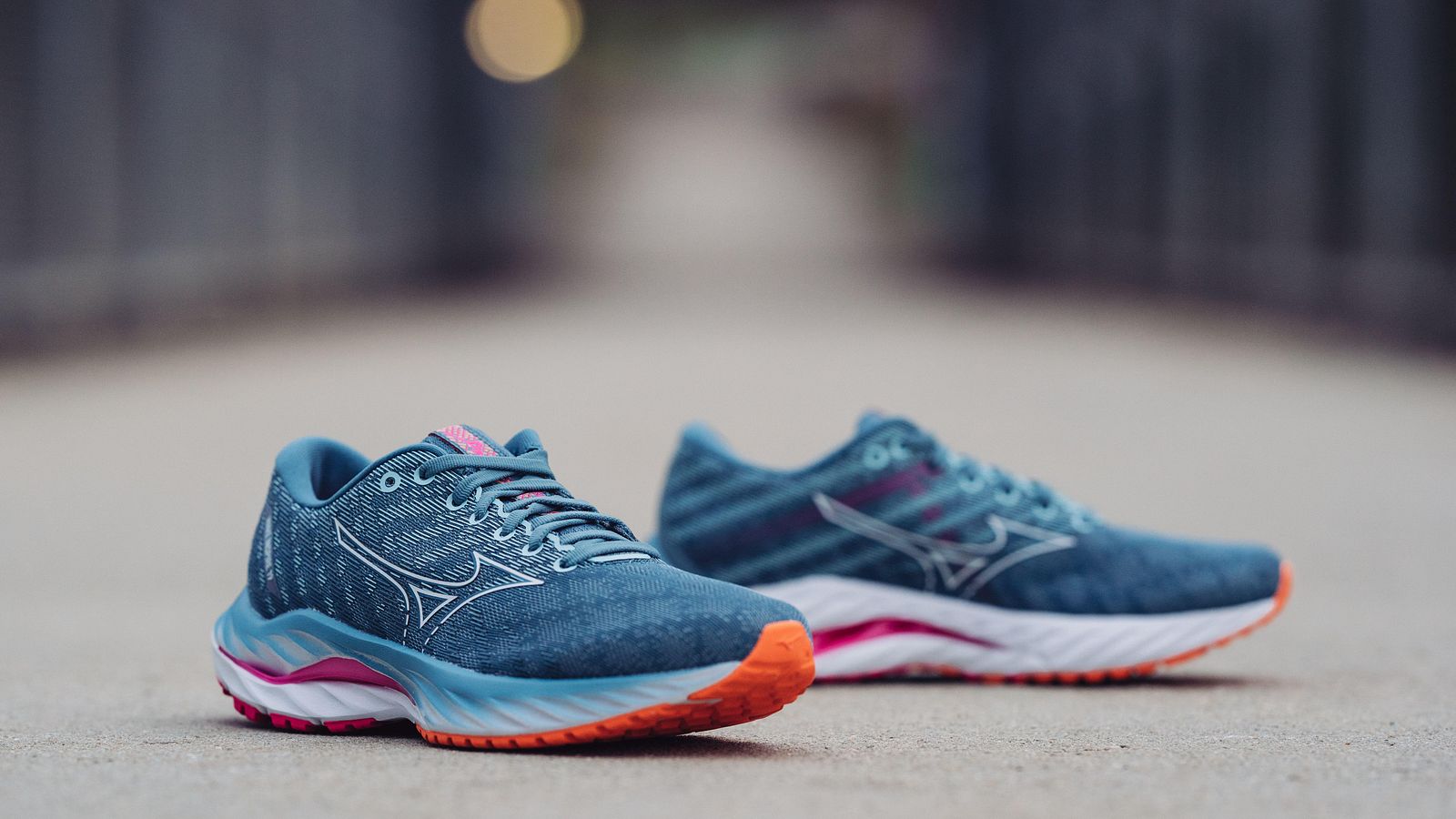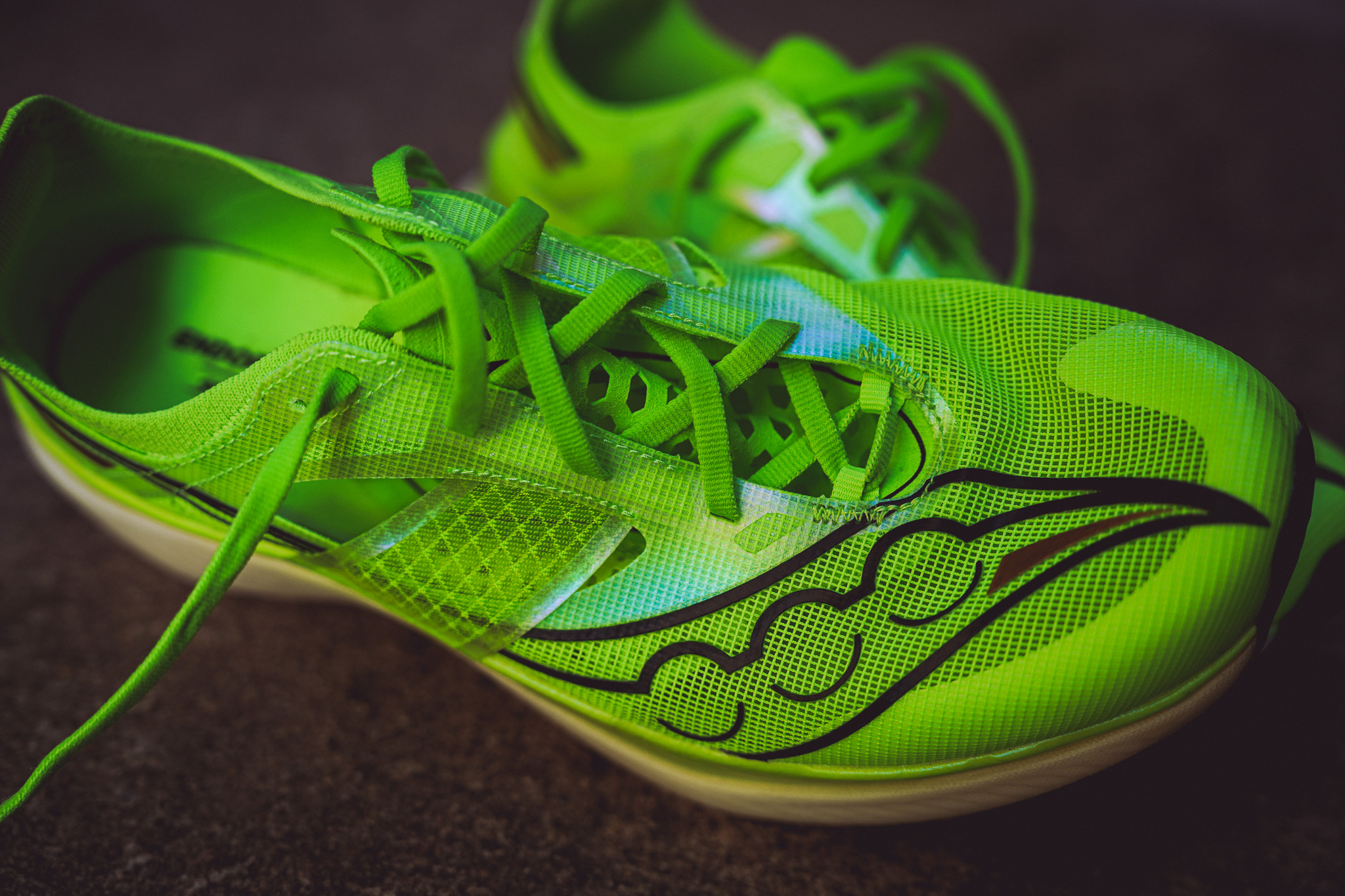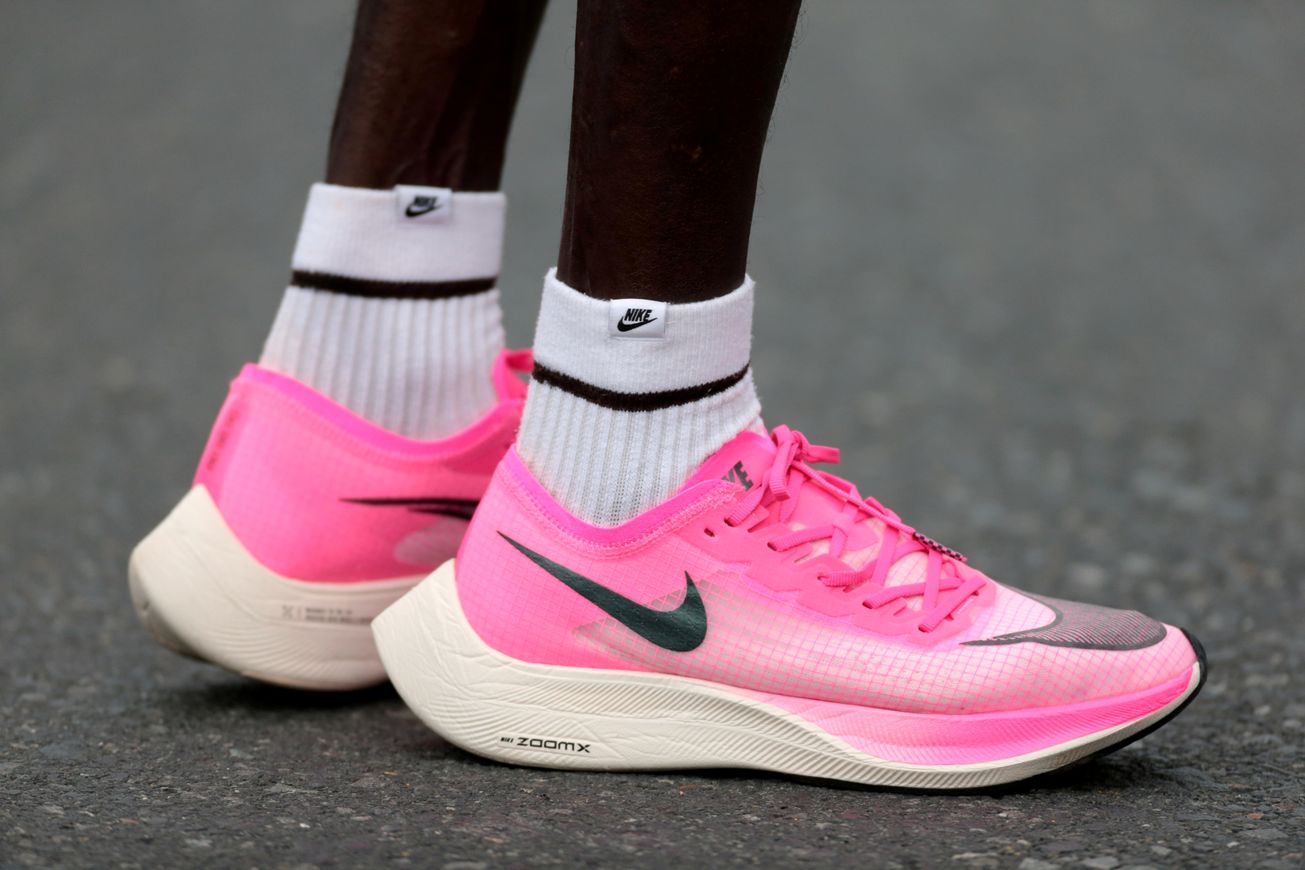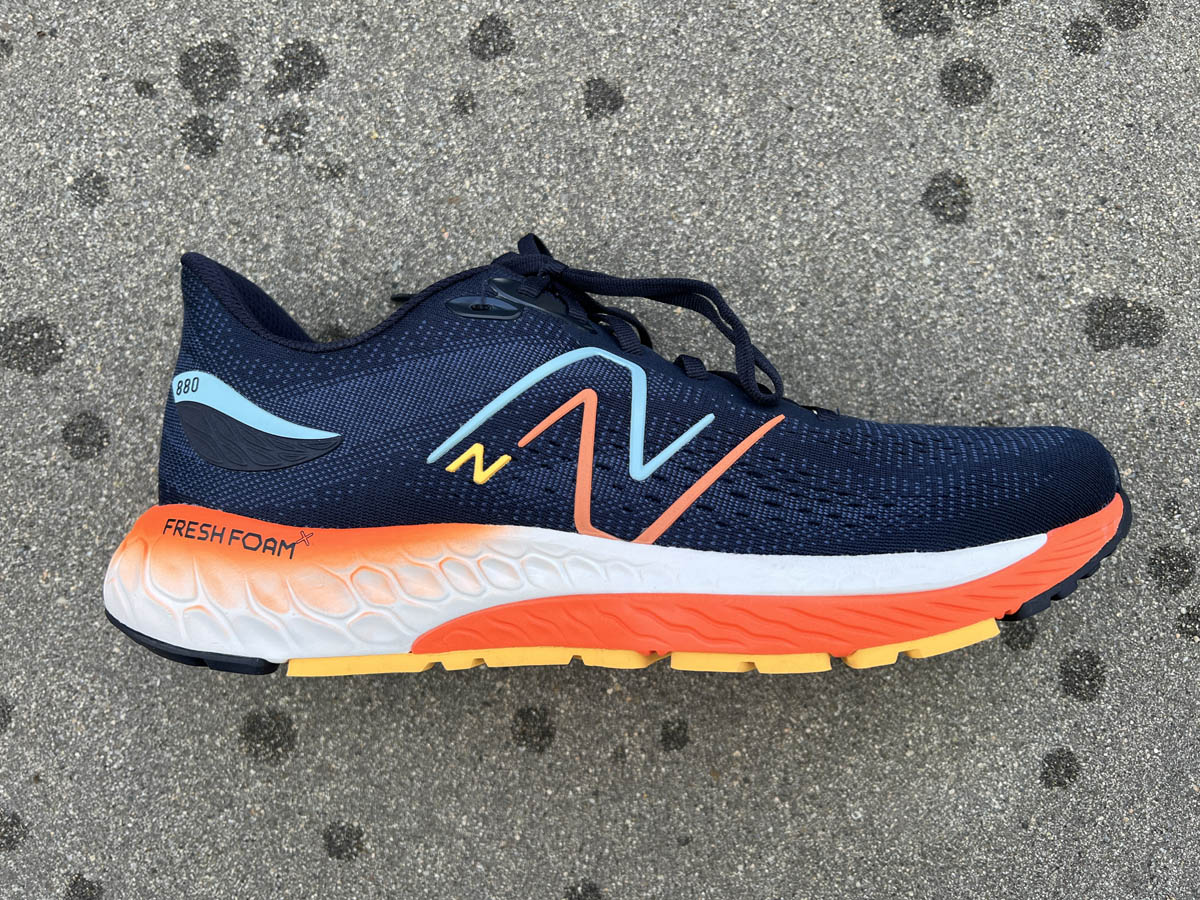Home>Misc>Featured>How Many Miles Do Trail Running Shoes Last


Featured
How Many Miles Do Trail Running Shoes Last
Modified: August 19, 2023
Find out how many miles trail running shoes last and make sure to check out our featured options for the best durability and performance.
Introduction
Trail running is an exhilarating and challenging sport that allows runners to connect with nature while pushing their physical limits. Unlike road running, trail running requires specialized footwear that can withstand the unpredictable terrain and provide the necessary support and protection.
One common question that trail runners often ask is, “how many miles do trail running shoes last?” The answer to this question varies depending on several factors, including the quality of the shoes, the trail conditions, and the frequency of use. Understanding these factors is important for runners to know when it’s time to replace their trail running shoes and how to properly care for them to maximize their lifespan.
In this article, we will discuss the various factors that affect the longevity of trail running shoes, including the breakdown of cushioning and midsoles, outsole wear and traction loss, and the durability of the upper materials. We will also explore the impact of trail conditions and frequency of use on the lifespan of the shoes. Additionally, we will provide tips on how to recognize the signs that indicate it’s time to replace your trail running shoes, as well as strategies to extend their lifespan and ensure optimal performance.
By understanding these key factors and implementing proper shoe maintenance, trail runners can make informed decisions about when to replace their shoes and enjoy many miles of comfortable and safe running experiences. So let’s dive into the world of trail running shoes and discover how long they truly last.
Factors Affecting the Longevity of Trail Running Shoes
Several factors contribute to the lifespan of trail running shoes. Understanding these factors can help runners make informed decisions about when to replace their shoes and how to properly care for them to prolong their longevity. Here are the key factors to consider:
- Cushioning and Midsole Breakdown: The cushioning and midsole of trail running shoes provide shock absorption and support during long runs on uneven trails. However, over time, the cushioning may break down, leading to reduced comfort and support. The durability of the cushioning material varies among different shoe models. Additionally, factors such as a runner’s weight, running style, and the intensity of their workouts can also impact how quickly the cushioning deteriorates.
- Outsole Wear and Traction Loss: The outsole of trail running shoes is designed to provide traction and grip on various terrains. As runners traverse rugged trails, the outsole can wear down, resulting in decreased traction and compromised grip. The durability of the outsole depends on the type of rubber used, the lug pattern, and the trail conditions in which the shoes are used. It’s important to regularly inspect the outsole for signs of wear and replace the shoes if the traction becomes ineffective.
- Upper Material Durability: The upper part of trail running shoes is subjected to constant stretching, bending, and exposure to elements like dirt, water, and rocks. The durability of the upper material plays a vital role in the overall longevity of the shoes. High-quality materials such as synthetic overlays and reinforced mesh can enhance the durability and provide protection against abrasion and tears. However, constant exposure to harsh elements can eventually weaken the upper material, necessitating a replacement.
- Trail Conditions and Frequency of Use: The type of trail surfaces and the frequency of use significantly impact the lifespan of trail running shoes. Running on rugged, rocky, or muddy trails may accelerate the wear and tear of the shoes. Likewise, runners who frequently log high-mileage runs will naturally experience more rapid deterioration of their shoes compared to those who run less frequently. It’s essential to consider the various trail conditions and your running habits when evaluating the lifespan of your trail running shoes.
By being aware of these factors, trail runners can better understand how long their shoes are likely to last and take the necessary steps to care for them properly. In the next sections, we will delve deeper into signs that indicate it’s time to replace trail running shoes and techniques to extend their lifespan for optimal performance.
Cushioning and Midsole Breakdown
The cushioning and midsole of trail running shoes play a crucial role in providing comfort and support during long-distance runs on uneven terrains. However, over time, the cushioning material may break down, leading to reduced shock absorption and diminished support. The rate at which the cushioning deteriorates depends on various factors:
- Quality of Cushioning Material: Different shoe models use different types of cushioning materials, such as EVA foam, TPU, or gel. The quality of these materials can significantly impact their durability and ability to retain their shape and responsiveness over time. High-quality cushioning materials tend to last longer and maintain their performance over a greater number of miles.
- Runner’s Weight and Running Style: The weight and running style of the individual also affect the breakdown rate of the cushioning. Heavier runners may experience accelerated cushioning compression due to increased impact forces, while runners with a heavy heel strike may experience more localized wear in the heel area. Regular inspection of the midsole for excessive compression or deformation can help determine if the cushioning requires replacement.
- Intensity of Workouts: The intensity of a runner’s workouts, including the duration and frequency of runs, can contribute to the breakdown of cushioning. Long-distance runs or high-intensity interval workouts may put more stress on the cushioning, causing it to deteriorate faster. It’s important to consider the demands placed on the shoes during workouts when assessing the lifespan of the cushioning.
While there is no exact mileage that determines when the cushioning of trail running shoes will break down, a general guideline suggests that high-quality trail running shoes can last between 300-500 miles before the cushioning starts to degrade significantly. However, it’s crucial to listen to your body and be observant of any discomfort or loss of support during your runs. If you notice a decrease in cushioning or experience increased fatigue or discomfort, it may be an indication that it’s time to replace your shoes.
To extend the lifespan of the cushioning and midsole, there are a few measures you can take:
- Rotate Your Shoes: Alternating between multiple pairs of trail running shoes can help distribute the stress on the cushioning and midsole, allowing them to recover and prolonging their lifespan.
- Store Your Shoes Properly: When not in use, it’s important to store your trail running shoes in a cool, dry place. Excessive heat and humidity can accelerate the breakdown of the cushioning material.
- Clean and Dry Your Shoes: Regularly cleaning off dirt and debris from your shoes and allowing them to dry naturally after each run can prevent the accumulation of moisture, which can lead to premature breakdown of cushioning and midsole materials.
By taking these preventive measures and attentively monitoring the condition of your cushioning and midsole, you can optimize the longevity and performance of your trail running shoes. However, it’s important to always prioritize your comfort and safety. If you feel a significant loss in cushioning or experience discomfort, it may be time to retire your old pair of trail running shoes and invest in a new pair to ensure continued support and enjoyment on the trails.
Outsole Wear and Traction Loss
The outsole of trail running shoes is designed to provide traction and grip on various terrains, ensuring stability and preventing slips and falls. However, continuous use on rugged trails can lead to outsole wear and traction loss, compromising the performance and safety of the shoes. Here are the key factors to consider:
- Type of Rubber: The type of rubber used in the outsole significantly impacts its durability and traction. Harder rubber compounds tend to be more durable but may sacrifice some grip, while softer rubber compounds offer excellent traction but wear down faster. Opting for shoes with a well-balanced rubber compound can help maximize both durability and grip.
- Lug Pattern: The lug pattern on the outsole determines how the shoe interacts with different types of terrain. Deep, aggressive lugs provide more traction but may wear down faster, while shallower lugs offer better durability but may compromise traction on slick surfaces. Choosing a lug pattern that suits the trails you frequently run on can help prolong the life of the outsole.
- Trail Conditions: The roughness and abrasiveness of the trail surface impact the wear and tear on the outsole. Rocky and abrasive terrains tend to wear down the outsole faster compared to smoother trails. Additionally, running on concrete or pavement can accelerate the deterioration of the rubber. Regularly inspecting the outsole for signs of wear, such as flattened lugs or exposed midsole material, can help determine if it’s time for a replacement.
Similar to cushioning breakdown, there is no exact mileage that determines when the outsole of trail running shoes will wear down. However, as a general guideline, trail running shoes usually last between 300-500 miles before experiencing noticeable traction loss and outsole wear. It’s essential to pay attention to any slips or decreased grip during your runs, as these can be signs that your outsole needs replacement.
To extend the lifespan of your outsole and maintain optimal traction, consider the following tips:
- Rotate Your Shoes: Just like with cushioning, rotating between multiple pairs of trail running shoes allows the outsoles to recover and reduces the wear and tear on a single pair.
- Choose the Right Shoes for the Terrain: Different terrains require different types of outsole patterns and rubber compounds. Selecting shoes that are specifically designed for the trails you run on can help optimize durability and grip.
- Regularly Clean Your Shoes: Cleaning your shoes after each run, especially if you’ve encountered mud or debris, helps prevent the accumulation of abrasive particles that can accelerate outsole wear. Use a soft brush or cloth to remove dirt from the lugs and sole.
- Be Mindful of Running on Hard Surfaces: Limiting the amount of time spent running on concrete or pavement can help minimize unnecessary wear on the outsole.
By following these practices, you can ensure that your trail running shoes maintain their traction and grip for a longer period, allowing you to confidently tackle any terrain. However, always prioritize your safety, and if you notice significant traction loss or feel less secure on the trails, it’s time to replace your shoes to avoid the risk of injury.
Upper Material Durability
The durability of the upper material in trail running shoes is of utmost importance as it provides protection, stability, and support to the foot. The constant bending, stretching, and exposure to elements like dirt, water, and rocks can gradually weaken the upper material, leading to tears, abrasion, and decreased overall performance. Here are the key factors that affect the durability of upper materials:
- Quality of Materials: The quality of the upper materials can vary between different shoe models. Synthetic overlays, reinforced mesh, and durable fabrics are commonly used in high-quality trail running shoes to enhance durability. These materials are specifically designed to withstand the rigors of trail running and offer protection against abrasion and tears.
- Construction and Reinforcements: The way the upper is constructed also plays a role in its durability. Features such as welded overlays, toe caps, and rubberized toe bumpers provide extra protection in areas prone to wear and tear. Double stitching and reinforced eyelets contribute to the overall strength and longevity of the upper material.
- Trail Conditions: The type of trails you run on and the frequency of encountering abrasive surfaces and obstacles impact the durability of the upper. Running on rugged, rocky, or overgrown trails may subject the upper material to more stress and increase the risk of tears. Additionally, constant exposure to water and mud can lead to premature deterioration of certain materials. Regularly inspecting the upper for signs of wear, fraying, or damage is essential to assess when it’s time for a replacement.
While the lifespan of the upper material varies depending on the quality and usage, high-quality trail running shoes can generally last between 400-600 miles before showing significant signs of deterioration. However, it’s important to note that runners with more aggressive running styles or those who frequently encounter challenging trail conditions may experience faster wear on the upper material.
Here are some tips to maximize the durability of the upper material and prolong the life of your trail running shoes:
- Remove Debris Promptly: After running, take a few moments to remove any dirt, rocks, or debris from the upper material. This prevents them from causing friction and potential tears during subsequent runs.
- Properly Dry Your Shoes: Avoid leaving your trail running shoes soaked in water or mud for extended periods. Allow them to air dry naturally in a well-ventilated area away from direct heat sources. Drying them promptly helps prevent moisture-induced damage to the upper material.
- Consider Gaiters: Gaiters can provide an extra layer of protection for the upper by preventing debris from entering the shoe. They can be particularly useful when running in sandy or gravelly terrains.
- Regularly Inspect for Damage: Routinely check the upper material, paying close attention to the high-stress areas like the toe box, heel counter, and flex points. If you notice any tears, fraying, or weakened areas, it’s typically a sign that you should replace your trail running shoes.
By implementing these practices, you can help extend the lifespan of the upper material, ensuring continued support and protection for your feet during trail runs. However, always prioritize your comfort and safety, and when in doubt, err on the side of caution and replace your shoes if you suspect significant damage to the upper material.
Trail Conditions and Frequency of Use
The lifespan of trail running shoes is heavily dependent on the trail conditions and the frequency of their usage. Different trail surfaces, varying terrains, and the intensity of your runs can all impact how quickly your shoes wear down. Here are the key factors to consider:
- Type of Trail Surface: The roughness and abrasive qualities of the trail surface can have a significant impact on shoe durability. Running on rugged, rocky, or uneven terrains can accelerate the wear and tear on your shoes, particularly the outsole and upper material. Similarly, constantly running on hard-packed trails or asphalt can also contribute to increased wear.
- Frequency and Duration of Runs: The frequency with which you use your trail running shoes has a cumulative effect on their lifespan. Regular runners who log hundreds of miles each month will naturally experience more rapid wear compared to occasional runners. Long-distance runs or high-intensity interval workouts also put additional stress on the shoes, increasing their rate of deterioration.
- Weather Conditions: Running in extreme weather conditions, such as heavy rain or extreme heat, can impact the longevity of your trail running shoes. Constant exposure to moisture can weaken the materials and lead to accelerated wear and tear. Additionally, running in intense heat can cause the materials to dry out and become brittle, compromising their durability.
It’s important to recognize that the lifespan of trail running shoes can vary greatly depending on these factors. While some runners may find that their shoes last 400-500 miles, others may need to replace their shoes after 200-300 miles due to more challenging trail conditions or high mileage running habits.
Regularly assessing the condition of your trail running shoes is essential to determine when they need to be replaced. Here are some signs that indicate it’s time for a new pair:
- Visible Wear and Tear: Check for visible signs of wear on the outsole, midsole, and upper material. This includes flattened lugs, reduced tread depth, excessive cushioning compression, fraying or tearing of the upper, or structural damage.
- Decreased Comfort or Support: If you notice a decrease in comfort, such as increased foot fatigue, pain, or reduced stability, it may indicate that the cushioning or support of your shoes has deteriorated beyond their functional limits.
- Loss of Traction: A significant decrease in traction and grip, particularly on slippery or technical terrains, is a clear indication that the outsole has worn down and needs replacement.
To maximize the lifespan of your trail running shoes, consider these tips:
- Invest in Quality Shoes: High-quality trail running shoes are designed to withstand the demands of rugged terrains and frequent use. Investing in well-constructed shoes with durable materials can help extend their lifespan.
- Rotate Your Shoes: Having multiple pairs of trail running shoes and rotating them can help distribute the workload and extend the lifespan of each pair. Alternating between shoes also allows for sufficient drying time between runs, reducing the risk of moisture-related damage.
- Practice Proper Shoe Care: Regularly clean your shoes, remove debris, and allow them to dry properly after each run. This helps prevent the accumulation of moisture, dirt, and abrasive particles that can contribute to premature wear and tear.
By being mindful of the trail conditions you encounter and adjusting your frequency of use accordingly, you can better manage and optimize the lifespan of your trail running shoes. Remember to listen to your body, assess the condition of your shoes regularly, and replace them when necessary to ensure continued comfort, support, and safety on the trails.
Signs that indicate it is time to replace your Trail Running Shoes
Recognizing when it’s time to replace your trail running shoes is essential for maintaining optimal performance, comfort, and safety during your runs. While the lifespan of trail running shoes can vary based on several factors, there are some common signs that indicate it’s time for a replacement. Here are the key signs to look out for:
- Visible Wear and Tear: Inspect your shoes for visible signs of wear and tear, such as worn-out outsole lugs, flattened midsole cushioning, frayed or torn upper material, or loose stitching. Excessive signs of degradation indicate that the shoes are no longer providing the necessary support and protection.
- Increased Foot Discomfort: If you experience foot pain, discomfort, or a noticeable decrease in support during your runs, it may be a sign that the cushioning or overall structure of your shoes has deteriorated. This can lead to added stress on your joints and muscles, increasing the risk of injury.
- Significant Loss of Traction: Grip and traction are crucial on the unpredictable terrains of trail running. If you notice a significant decrease in traction or find yourself slipping more frequently, it’s typically an indication that the outsole has worn down to the point where it can no longer provide the necessary traction and grip.
- Decreased Responsiveness: If you feel a decrease in the shoe’s responsiveness, meaning you no longer experience the same level of energy return or bounce as when the shoes were new, it may suggest that the cushioning or midsole structure has degraded, compromising their performance.
- Unusual Deterioration of Performance: If you notice a sudden decline in your overall performance, such as a decrease in speed, endurance, or the ability to maintain proper running form, it could be an indication that your shoes are no longer providing the necessary support and functionality.
It’s important to note that the exact mileage at which these signs become apparent can vary depending on factors such as the quality of the shoes, the runner’s weight and running style, the trail conditions, and the frequency of use.
Regularly monitoring the condition of your trail running shoes is crucial to determine when it’s time for a replacement. If you notice any of the aforementioned signs, it’s generally a good idea to retire your current pair and invest in a new one to ensure continued comfort, support, and safety during your runs.
Remember, everyone’s running habits and shoe needs are unique, so it’s essential to listen to your body and pay attention to how your shoes feel and perform. If in doubt, consult with a running specialist or shoe professional who can provide expert advice on determining the right time for a shoe replacement based on your specific needs and usage patterns.
How to Extend the Lifespan of Your Trail Running Shoes
Proper care and maintenance can significantly extend the lifespan of your trail running shoes, allowing you to get the most out of your investment. Here are some tips to help you maximize the durability and performance of your shoes:
- Rotate Your Shoes: Alternate between multiple pairs of trail running shoes to distribute the impact and allow each pair to recover between runs. This helps reduce the wear and tear on a single pair and can extend the overall lifespan of your shoes.
- Choose the Right Shoes for the Terrain: Select trail running shoes that are specifically designed for the type of terrain you frequent. Different shoe models offer varying levels of durability and traction based on the intended trail conditions. Choosing the appropriate shoes for the terrain can minimize unnecessary wear and tear.
- Properly Store Your Shoes: When not in use, store your shoes in a cool, dry place away from direct sunlight and extreme temperatures. Excessive heat can degrade the materials and affect their performance and lifespan.
- Clean Your Shoes Regularly: After each run, remove any dirt, mud, or debris from your shoes. Use a soft brush or cloth to clean the uppers, outsoles, and lugs. This prevents the accumulation of dirt, which can degrade the materials and decrease their longevity.
- Air Dry Your Shoes: Allow your shoes to air dry naturally after cleaning or exposure to moisture. Avoid using direct heat sources such as heaters or dryers, as excessive heat can cause the materials to warp or break down.
- Use Protective Gear: Consider using gaiters or waterproof shoe covers to protect your shoes from excessive moisture, mud, or debris. These accessories can help minimize damage and prolong the lifespan of your shoes, particularly when running in challenging trail conditions.
- Regularly Inspect Your Shoes: Routinely check your shoes for signs of wear and tear, such as worn-out outsoles, torn uppers, or cushioning that has lost its responsiveness. Regular inspection allows you to address any issues promptly and make informed decisions about shoe replacement.
- Know When to Replace: Pay attention to the signs that indicate it’s time to replace your trail running shoes, such as excessive wear, decreased comfort, or loss of traction. Continuing to use worn-out shoes can lead to discomfort, poor performance, and increased risk of injury.
By following these tips and incorporating a few simple practices into your shoe care routine, you can extend the durability and performance of your trail running shoes. This ensures that they continue to provide the necessary support, protection, and traction you need during your runs on the trails.
Remember, proper maintenance and being aware of when to replace your shoes will not only help you save money in the long run but also contribute to a more enjoyable and safe trail running experience.
Conclusion
Trail running shoes are designed to withstand the challenges of running on rugged terrains, providing the necessary comfort, support, and protection for avid trail runners. The lifespan of trail running shoes can vary depending on factors such as the quality of the shoes, trail conditions, frequency of use, and proper care and maintenance.
Understanding the factors that affect the longevity of trail running shoes, such as cushioning and midsole breakdown, outsole wear and traction loss, and upper material durability, is essential for making informed decisions about when to replace your shoes. Regularly monitoring their condition and recognizing signs of wear and tear, decreased performance, and diminished comfort can help determine when it’s time for a new pair.
To extend the lifespan of your trail running shoes, it’s crucial to practice proper care and maintenance. This includes rotating your shoes, choosing the right shoes for the terrain, cleaning and drying them regularly, and inspecting them for any signs of damage. Taking these measures can help maximize their durability and performance.
While there are general guidelines regarding the mileage that trail running shoes can last, it’s important to prioritize your comfort and safety. Listening to your body and replacing your shoes when necessary ensures that you can continue to enjoy the trails with confidence and reduce the risk of injury.
By considering these factors, practicing proper shoe care, and being mindful of trail conditions and wear patterns, you can make the most out of your trail running shoes, allowing you to embark on many miles of exciting and rewarding trail running adventures.

